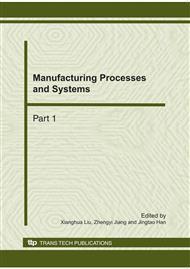p.1623
p.1629
p.1634
p.1639
p.1643
p.1648
p.1652
p.1656
p.1661
Analysis of Cylindrical SMA Fan Clutch
Abstract:
This paper presents a cylindrical Shape memory alloy (SMA) fan clutch for automobile cooling system application. The resilience of pre-strain 2% SMA alloy wire is analyzed in the processes of heating and cooling. The Design method of SMA helical spring is described. The expression of transmission torque provided by SMA spring is established. The relationship between transmission torque and temperature is analyzed in detail. The results indicate that the transmission torque increases gradually with the increasing of airflow temperature and decreases with the decreasing of airflow temperature, respectively. The cylindrical SMA fan clutch has the property that its transmission torque changes rapidly according to the temperature of airflow from radiator.
Info:
Periodical:
Pages:
1643-1647
Citation:
Online since:
October 2010
Authors:
Keywords:
Price:
Сopyright:
© 2011 Trans Tech Publications Ltd. All Rights Reserved
Share:
Citation:


